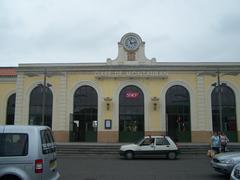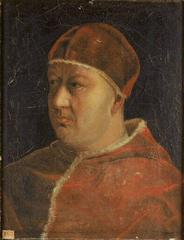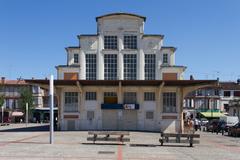Ramier Maleville Dovecote Montauban: Visiting Hours, Tickets, and Historical Information
Date: 14/06/2025
Introduction
Located in the tranquil Ramier Maleville area on the outskirts of Montauban, in southwestern France’s Tarn-et-Garonne region, the Ramier Maleville Dovecote (Pigeonnier du Ramier Maleville) is a striking example of 18th-century rural architecture and a powerful symbol of France’s agricultural heritage. Built in 1737, this brick dovecote not only showcases impressive craftsmanship but also reflects the social hierarchies and agricultural practices of the Ancien Régime. As one of the most well-preserved dovecotes in Occitanie, it is a protected Monument Historique, highlighting its enduring significance within both local and national heritage conservation efforts. While interior access is generally not available due to private ownership, the dovecote’s scenic riverside location and preserved exterior provide a rewarding experience for history lovers, architecture enthusiasts, and cultural travelers (POP: Plateforme ouverte du patrimoine; Musée du Patrimoine).
This guide provides everything you need to know about the Ramier Maleville Dovecote, including historical context, architectural highlights, visiting hours, ticketing, accessibility, practical travel tips, nearby attractions, and preservation information.
Table of Contents
- Historical Background and Social Role
- Architectural Features and Significance
- Heritage Status and Conservation
- Visiting Hours, Tickets, and Accessibility
- Practical Visitor Tips and Nearby Attractions
- Responsible Tourism and Preservation
- FAQ
- Essential Contacts and Further Information
- Sources and Further Reading
Historical Background and Social Role
Dovecotes (pigeonniers) hold a special place in French rural history. Their origins can be traced to antiquity, but they flourished during the medieval period and the Ancien Régime, when the right to own a dovecote—known as the “droit de colombier”—was reserved for the nobility and major landowners (RuralHistoria). These structures were both practical—providing meat, eggs, and fertilizer—and symbolic, serving as status markers in the landscape. By the 13th and 14th centuries, dovecotes were common features on estates and in monastic holdings, often referenced in legal documents and property surveys.
Architectural Features and Significance
Construction and Materials
Built in 1737, the Ramier Maleville Dovecote is constructed primarily from durable regional brick, distinguished by three decorative cornices encircling the structure and a robust masonry base. The reddish brickwork is characteristic of Montauban and the wider Tarn-et-Garonne area (POP: Plateforme ouverte du patrimoine).
Roof and Weather Adaptations
A defining feature is the “pied de mulet” (mule’s foot) style canal-tile roof, arranged in a stepped pattern for both function and aesthetics. Openings for pigeon entry are integrated at the roof breaks, while parapet walls on three sides rise above the roofline to shield birds from prevailing winds—an effective adaptation for the open landscapes of southwestern France (POP: Plateforme ouverte du patrimoine).
Internal Layout and Unique Elements
The ground floor originally functioned as a stable, with the pigeon loft accessible via a door on the first floor, a design to deter predators. Most remarkable is the survival of 400–500 original nesting pots made of terracotta, embedded within the walls—a rare and valuable feature illustrating traditional pigeon-keeping methods (POP: Plateforme ouverte du patrimoine). Three prominent buttresses at the rear ensure structural stability.
Heritage Status and Conservation
The Ramier Maleville Dovecote has been recognized as a Monument Historique since 1989 (POP: Plateforme ouverte du patrimoine). It is one of at least a dozen protected dovecotes in Tarn-et-Garonne and among 45 in the greater Occitanie region (Musée du Patrimoine de France). Heritage authorities oversee ongoing conservation, with efforts focusing on the preservation of the original brickwork, roof tiles, and terracotta nesting pots. Challenges include biological growth, weathering, and maintaining structural integrity, all addressed through traditional restoration techniques.
Visiting Hours, Tickets, and Accessibility
Exterior Visits
- General Access: The dovecote is privately owned and not regularly open to the public. However, visitors are welcome to view the exterior from public paths and roads at any time of year.
- Special Events: On rare occasions, such as the Journées Européennes du Patrimoine (European Heritage Days) in September, the dovecote may be open for guided tours or special visits. Check announcements from the Montauban Tourist Office for up-to-date information.
- Tickets: There is no fee for exterior viewing. Entry during special events is usually free but may require prior registration.
- Guided Tours: Guided tours are offered only during specific heritage events. Booking in advance is recommended.
Accessibility
- Physical Access: The surrounding area is generally flat and suitable for visitors with limited mobility, though some paths near the dovecote are unpaved.
- Facilities: Public restrooms and picnic areas are available in nearby parks and at the tourist office.
- Travel: The dovecote is accessible by car, local bus, taxi, bike, or on foot via marked trails.
Practical Visitor Tips and Nearby Attractions
Getting There
- By Train: Montauban is less than an hour from Toulouse by regional train. From the Montauban-Ville-Bourbon station, local buses or taxis reach the Ramier Maleville area (The Good Life France).
- By Car: Montauban is served by the A20 and A62 motorways, with ample parking in town.
- By Bike or Foot: Marked cycling and walking trails lead through the riverside landscape, making for a scenic approach.
Surroundings and Facilities
- Setting: The dovecote is set in a riverside green space, ideal for walks, picnics, and photography.
- Accessibility: Generally suitable for visitors of all abilities, though surface conditions may vary.
- Nearby Attractions:
- Place Nationale: Montauban’s iconic arcaded square
- Montauban Cathedral (Cathédrale Notre-Dame-de-l’Assomption)
- Musée Ingres
- Abbaye de Montauriol
- Maison dorée
- Musée de la Résistance et du Combattant (The Good Life France)
Accommodation
Options range from boutique hotels to guesthouses, including Hôtel du Commerce, Domaine de Belcayre, Chambres d’hôtes du Ramiérou, and La Maison d’hôtes Chez Delphine (Musée du Patrimoine).
Responsible Tourism and Preservation
- Respect the Site: Do not disturb nesting birds or damage the structure. Climbing and drone use are prohibited.
- Support Local Businesses: Patronize nearby cafes, restaurants, and shops to support heritage-friendly tourism.
- Learn and Share: Engage with interpretive materials and share images with descriptive alt text to promote awareness.
Frequently Asked Questions (FAQ)
Q: What are the visiting hours of the Ramier Maleville Dovecote?
A: The dovecote is generally accessible for exterior viewing year-round. Special openings may occur during heritage events.
Q: Is there an admission fee?
A: Exterior viewing is free. Guided tours during special events may require registration.
Q: How do I get there from the city center?
A: The site is reachable by local bus, taxi, bike, or on foot from Montauban’s center.
Q: Is the site wheelchair accessible?
A: The terrain is mostly level, but some paths may be unpaved. Consult local resources for detailed accessibility information.
Q: Are there guided tours?
A: Tours are only available during specific heritage events; check with the tourist office for details.
Essential Contacts and Further Information
Summary and Recommendations
The Ramier Maleville Dovecote is a unique testament to the rural ingenuity and social history of 18th-century France. Its preservation as a Monument Historique ensures that this remarkable structure continues to educate and inspire. While interior access remains limited, the dovecote’s distinctive architecture, riverside setting, and integration into Montauban’s heritage circuit make it a memorable destination. For enhanced experiences, plan your visit around heritage events, explore nearby attractions, and utilize resources such as the Audiala app and the official tourism platforms to stay informed.
Sources and Further Reading
- RuralHistoria – Dovecotes in France
- POP: Plateforme ouverte du patrimoine – Ramier Maleville Dovecote
- Monumentum – Pigeonnier du Ramier Maleville
- The Good Life France – What to See in Montauban
- Musée du Patrimoine – Ramier Maleville Dovecote
- Rushden Hearts and Soles – History of Dovecotes


